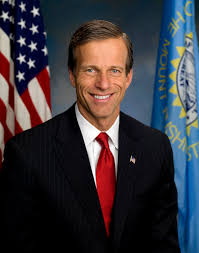
It was in late August 11 years ago that I stood beside then-Gov. Mike Rounds at a podium and announced that the Base Realignment and Closure (BRAC) Commission had removed Ellsworth Air Force Base from the Department of Defense’s closure list. I fought hard to save Ellsworth. It was one of my first major victories after having joined the Senate, and I still consider it a top accomplishment for the state of South Dakota, especially for West River.
It was clear then – and even clearer today – that closing Ellsworth would have been a bad choice, not only for the Rapid City area, which would have suffered a significant economic setback, but also for the Air Force and the Department of Defense, which would have lost a strategic installation. It would have cost taxpayers millions of dollars in new military construction and environmental clean-up, and it would have created a sizeable risk to our national defense strategy as a result of consolidating the entire B-1B bomber fleet into a single base. Eleven years later, it’s evident that the BRAC Commission made the right decision, and the results speak for themselves.
Ellsworth has a $260 million impact on the state’s economy, and it’s the second largest employer in South Dakota. It’s home to the 28th Bomb Wing’s two B-1B Lancer combat squadrons and the MQ-9 Reaper 89th Attack Squadron, and the base now has access to training airspace that spans nearly 35,000 square miles. The expansion of the Powder River Training Complex (PRTC) was a complicated project nearly a decade in the making, but was a project worth the fight. And above all else, the men and women based at Ellsworth are still providing world-class service to their community and the United States, and they are maintaining the legacy of the Doolittle Raiders.
One of the tenants of our national security strategy is to ensure vital military assets are strategically placed throughout the country, and Western South Dakota is the perfect location. Now that Ellsworth is hosting large force exercises in the largest training airspace over the continental United States, the base has a significant importance for crews throughout the Air Force and the Air National Guard. Airmen from around the country are able to train for more realistic scenarios by simulating combat conditions that will help them remain the best-trained fighters in the world. The PRTC also saves Ellsworth and the Air Force millions of dollars annually on fuel and maintenance costs.
The Obama administration hinted earlier this year that it might consider pursuing another round of BRAC closures throughout the country. Despite it being extremely difficult for such a proposal to get through Congress, Ellsworth’s larger role in our national security and the investments that have been made over the last 10 years put it in a particularly strong position today and in the many years to come.
